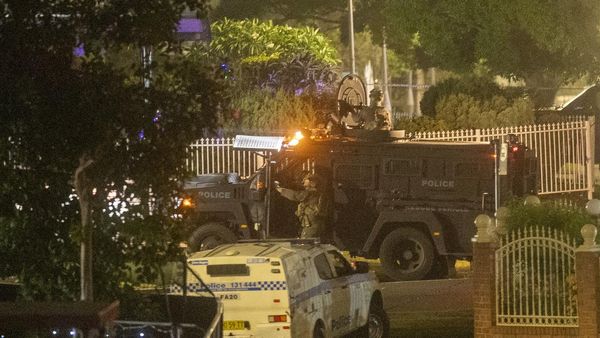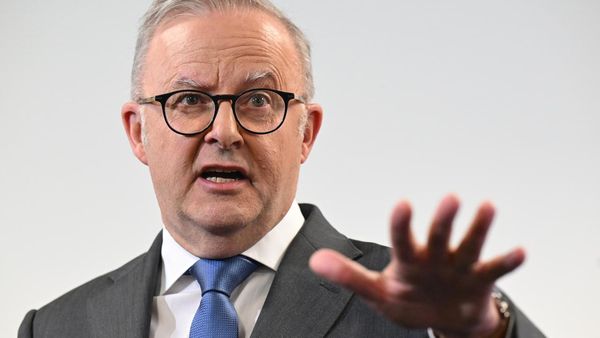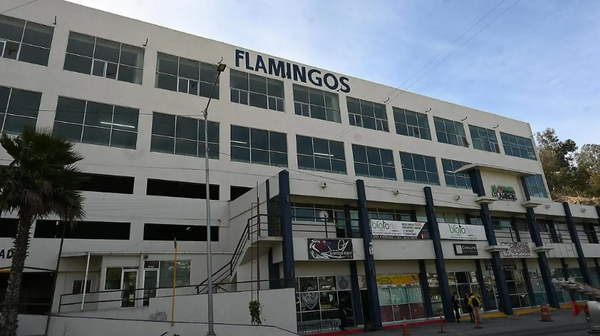
On Wednesday, the FIA is set to reveal a concept that will form the WRC's future direction, with the focus being on the top category. The Rally1 hybrid class, launched in 2022, has come under scrutiny having struggled to attract manufacturers, while entries have dropped below 10 cars this season.
This action from the FIA is the result of the formation of a working group last December which has been tasked to “evaluate and recommend the future direction of rallying”.
The group is headed by FIA Deputy President Robert Reid, the 2001 World Rally Championship title-winning co-driver, and 1981 WRC co-driver champion David Richards, who is the chairman of Motorsport UK. Its members also include FIA road sport director Andrew Wheatley and the FIA’s technical director Xavier Mestelan Pinon.
Top of the taskforce’s agenda has been addressing the WRC’s top class, Rally1, from next year until the end of 2032, the conclusion of the next homologation cycle. All options are on the table, including a continuation of Rally1, a move to Rally2 and the creation of a Rally2 Plus formula based around a modified Rally2 car. It is even understood that changes could even been made for 2025, with two years remaining on the initial Rally1 homologation cycle, although this is thought to be unlikely.
Richards met with manufacturers, teams and the WRC promoter to discuss the future at Rally Sweden earlier this month. The FIA has also consulted fans on the future of the WRC via a survey, with the results of this study expected to be collated before the WMSC. A portion of the data collected is likely to inform some of the decision-making process.
While a definitive set of future regulations for the short term, and from 2027 onwards, won’t be presented until June this year, this week’s concept release is set to provide a clear picture for the future.

“[The concept] will be a series of objectives that will create a pathway to go forward,” Wheatley told Autosport.
“It won’t be a set of regulations, it is not possible to develop a set of regulations in that time. There will be a clear set of objectives.
“If you do something that everybody doesn’t want, I think that is a pretty dangerous thing to do. So I think what you have to try and do is find a middle ground.
“We have quite a number of options and when you are talking about making regulations we are not talking about recreating, we have all the pieces we want. We are not looking to recreate everything new.
When asked if it was more important to keep the current marques happy than searching for new brands, he added: “It is about trying to find a balance that works for everybody, which is impossible, but what you have to try and find is a compromise.”
If the outcome of the meeting does result in changes to be implemented for 2025, teams will have the necessary time to make them, according to Wheatley.
“There won’t be a regulation change that is dramatic and will require something that needs to be redeveloped in three months,” he said.
“On the table we have a smorgasbord of opportunities that are used in deferent categories and what we need to do is cherry pick the right bits or make no change.”

The WRC Promoter’s view
The WRC Promoter is not part of the working group but has made its own submissions to the taskforce formed around target for a clear and attractive set of regulations.
“We had a good meeting with David Richards and Andrew was also present,” the WRC’s senior sporting director Peter Thul told Autosport.
“Our public opinion is we need a regulation very fast and also directed for the future which they [the FIA] are working on. We need a regulation that will allow the current competitors to continue and to get new competitors.
“Getting new competitors is a challenge due to the disruption of the automotive industry which is nothing new.
“I don’t know what we will be presented on the 28th but they are all thinking about these aspects because as a promoter we can only be successful if the product itself is good. It was a very good conversation and I’m looking forward to the proposal.”
What are the teams saying?
The current WRC teams are split in their opinions on the future, although they are in agreement when it comes to lowering the costs of the Rally1 car that is not far shy of one million euros.
Toyota is open-minded regarding the short-term future, be it sticking with Rally1 until the end of the homologation cycle or a move to Rally2 or Rally2 Plus.
“At the moment from a Toyota perspective we are basically fine with both options, Rally1 or Rally2,” Toyota WRC team principal Jari-Matti Latvala told Autosport.

“These [Rally1 cars] are great machines. I would say they are fast, safe and they look good and they sound good, but they are very, very expensive.
“We don’t have privateers as we used to have in the older days. Moving to Rally2 or let’s say Rally2 Plus would solve many of the issues especially cost-wise, which could allow privateers to come and run in the top class.
“I don’t necessarily think [the changes] will be in 2025 but I think if all the teams are now confident to carry on with these [Rally1] cars for 2025 and 2026 then I would expect 2027 would be when there are changes.”
Hyundai has invested heavily in Rally1 and is urging the FIA to be cautious against making immediate radical changes. The brand’s bosses have been vocal in its support for the current Rally1 class continuing until the end of its cycle in 2026, ahead of a regulation change in 2027.
It has also specified a need for a platform that allows manufacturers to showcase technology that can be traced back to its road cars.
To protect Rally1 until the next homologation window, that begins in 2027, team principal Cyril Abiteboul is prepared to field four cars in the future and has submitted a proposal to the FIA for a change in regulations that ensures all teams have to commit to running four cars to help boost entries.
“If you have three manufacturers prepared to enter four cars, then you have 12 cars,” Abiteboul told Autosport.
“We have seen that maybe we have not enough cars but those cars and the quality of the racing in my opinion is excellent.

“Maybe, we need to have a conversation about how to make this economically sustainable for all teams, but I think this is something that could be put into the regulations and maybe one of these four cars could be used for a young driver.
“We don’t need to write off a category [Rally1] or turn the table upside down to address the issues we have in the short term, and if we do that [proposal] it will give more time to focus on the bigger issue, which is 2027.”
In the current climate committing to run four cars would be incredibly difficult for M-Sport-Ford, whose business model is supplemented from selling rally cars. In the Rally1 era it has sold only one Ford Puma Rally1 to a privateer whereas in the past it would sell between 8-14 top level cars a year.
While open to listening to the FIA’s view for the future, the team has previously stated a view that a pinnacle car is required to head up the top tier.
“We are open to listening to what can be possible in the future,” M-Sport founder Malcolm Wilson told Autosport.
“We all signed up for a five-year agreement on the current regulations so I really can’t see any change before 2027, but we are not adverse to looking at anything for the future, and I think it is fair to say everything can be improved.
“There is a possibility of removing the hybrid unit from the current car but again that needs a lot of thought.
“It would probably take 150,000 euros out of the car so that could have a positive effect to bring in private guys because that is obviously what we are really missing, and I think the sport would benefit from more people in the Rally1 car. There is a lot of things to discuss.”

One added complication for M-Sport, should the FIA decide on a Rally2-based set of regulations for the future, is the fact that the team’s current Fiesta Rally2 car is based on car that is no longer in production. This would make it difficult to attract funding from Ford.
Wilson didn’t rule out the possibility of creating a car for a regulation of this type in the future, but admitted it would require two years of development.
“[A new car] is something that could be done for 2027 and whatever way you look at it,” he added.
“You need two years to develop a car and if we do decide to go down that route, then technical regulations need to be written.
“We no longer have the Fiesta. The Puma is a bigger car and to do that, you would need to find a way to equalise the performance between all the cars and that is not going to happen overnight.”







